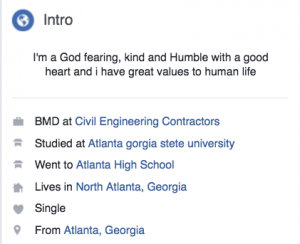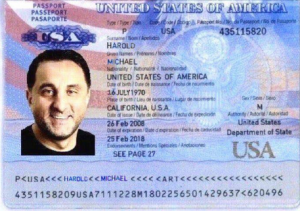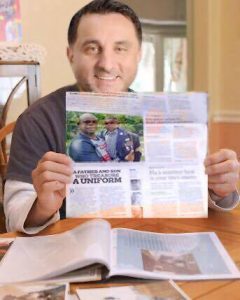Update December 3/09: There has been much interest in this list so I have transferred this resource to a wiki. This post will remain, but I would be happy if others contributed to the wiki version found here. Thanks for your interest in media education.
Over the past few years, I have been collecting interesting Internet videos that would be appropriate for lessons and presentations, or personal research, related to technological and media literacy. Here are 70+ videos organized into various sub-categories. These videos are of varying quality, cross several genres, and are of varied suitability for classroom use.

Conversation Starters:
1. Everything is Amazing, Nobody is Happy – Comedian Louis CK’s appearance on Conan O’Brian was brilliant, humorous and really sets the stage for discussing societal changes due to the progress of technology.
2. Trendspotting: Social Networking – Comedian Dimitri Martin will make you laugh as he discusses social networking. This video is useful in deconstructing concepts of friendship and interaction in the age of social networks.
3. Did You Know 3.0 – Widely viewed video by Karl Fisch and Scott McLeod that gives light to the changes imminent in our emerging knowledge-based society. This is an excellent video for framing and introducing the the new reality to students, teachers, faculty, and administrators.
4. Introducing the Book – This comedic portrayal of a medieval helpdesk relays the point that each new technology will bring with it challenges of user adoption and a steep learning curve.
5. Mr. Winkle Wakes – A great video by Matthew Needleman retelling a classic story about the resistance of schools to change.
6. The Human Network – This advertisement from Cisco projects a connected world that is likely only several years away. What seemed like fiction a few years ago, is a new digital reality.
7. The Essay – A 10 year girl recites an essay about the future while her parents are deeply concerned about her sanity. This Telenor commercial helps us to understand how far technology has come.
8. Web Crash 2007 – This is an excellent, very funny video from The Onion that describes the horrible Internet crash of 2007.
9. Five Minute University – This is a classic clip from Father Guido Sarducci from Saturday Night Live fame. The video gives humorous critique to learning in higher education. (Suggested by ZaidLearn).
21st Century Learning:
10. An Anthropological Introduction to Youtube – Professor Michael Wesch’s presentation to the Library of Congress, June 23rd, 2008. The video is over 55 minutes long but is informative and engaging throughout.
11. The Machine is Us/ing Us – “Web 2.0 in just under 5 minutes”, explained by the Digital Ethnography Project at Kansas State University (Wesch). The video helps to illustrate important changes brought by Web 2.0 (read/write web, social web) as content and form became separated.
12. A Vision of Students Today – Another excellent video by Michael Wesch and his group that summarizes some of the most important characteristics of students today.
13. The Networked Student – This video by Wendy Drexler describes an emerging learning environment for the connected student. It depicts an actual project completed by her high school students and provides a tangible example of a well-connected learner.
14. We Think – This is an interesting and novel animation that stresses and acknowledges the importance of social networks in developing shared knowledge.
15. A Vision of K12 Students Today – Inspired by Wesch’s A Vision of Students Today, this project approaches the subject of 21st Century Learning from a K12 approach. (Suggested by Cindy Seibel)
16. 21st Century Schools – This is a video prepared by the Department of Children, Schools and Families in the United Kingdom. It gives a vision for the 21st Century School and features Stephen Heppell.
17. Brave New World-Wide Web – An excellent video by David Truss highlighting his journey to become a connected teacher.
18. A Portal To Media Literacy – This is an excellent presentation by Michael Wesch held at the University of Manitoba. “During his presentation, the Kansas State University professor breaks down his attempts to integrate Facebook, Netvibes, Diigo, Google Apps, Jott, Twitter, and other emerging technologies to create an education portal of the future.”
19. Joe’s Non Netbook – This video comes from Chris Lehmann from Science Leadership Academy in Philadephia. In the video, one of the students contemplates the affordances inherent in digital media vs. traditional media. (Suggested by Scott Floyd)
20. Learning to Change, Changing to Learn (Kid’s Tech) – A video featuring students talking about their passionate for technology, and their use of media, technology, and social networks. See other videos from this group at High Tech High. (Thanks Heidi)
Copyright, Copyleft & Remix/Mashup Culture:
21. RiP: A Remix Manifesto – This is an inspiring, open source documentary that explores copyright and remix culture. Individuals are able to contribute to the film, or just enjoy the information and stories it has to offer. This is an important film for those wishing to understand the battleground of intellectual property as it relates to our emerging generation.
22. Laws That Choke Creativity – Larry Lessig’s must-see TED Talk verifies the dire need for thoughtful copyright reform. Lessig is a talented presenter, and there is much to learn here about engaging audiences beyond the information within.
23. The Most Important 6-Sec Drum Loop – This fascinating 20 minute video explains “the history of the ‘Amen Break,’ a six-second drum sample from the b-side of a chart-topping single from 1969.” The story of this drum loop informs our emerging notions of the nature creativity and the ownership of culture.
24. The Wilhelm Scream – This is short compilation of the Wilhelm Scream in popular movies. Once you identify it, you will notice it everywhere.
25. Wanna Work Together? – This promotional video for the Creative Commons does well to explain copyright, copyleft, and details reasons why one would choose a Creative Commons license.
Influence of Media on Society:
26. Killing Us Softly 3 – Jean Kilbourne’s popular presentation on women in advertising.
27. Dove Evolution – This is a popular advertisement from Dove’s ‘Campaign For Real Beauty’. While the video is well done, there has since been some criticism of Dove’s ownership of Axe with it’s very contradictory style of advertising.
28. Dove Onslaught – Also from Dove’s Campaign for Real Beauty, this video illustrates the incredible impact of advertising on adolescent girls.
29. Birth Control: Current – Comedian Sarah Haskins has developed an excellent series of videos that take a humorous look at ads targeting women. For a complete list of Haskins’ videos, view this previous post on the subject.
30. Video Games & Sex – This is an excellent presentation by Daniel Floyd regarding the place of sex and sexuality in video games as a media genre. The video covers a brief history of sex in gaming which has been primarily exploitative and superficial. Floyd then argues, if video games are to be seen as an emerging artistic medium, the treatment of sex in video games needs to be more sophisticated and mature. (Note: this video may not be suitable for minors.)
31. Boys Beware – This was an anti-homosexual propaganda film from the 1950’s. In light of recent anti-gay marriage ads, it (unfortunately) appears similar propaganda continues to be broadcast.
32. How Cellphones, Twitter, Facebook Can Make History – This is an excellent TED Talk by Clay Shirky that demonstrates how emerging social tools “help citizens in repressive regimes to report on real news, bypassing censors.”
33. Story of Stuff – This video doesn’t directly look at how media affects society. Rather, it takes a very critical and eye-opening look at the life cycle of goods and services. It is definitely worth watching and sharing.
History of Technology & Media:
34. The Growing Phenomenon of Internet – This is a 1993 CBC report on the emergence of the Internet. It is interesting to watch this early media account of the Internet and to think about how much has changed in only 16 years. Additionally, the techno-utopianism of this report is striking.
35. A Communications Primer – The ephemeral piece is an instructional film created in 1953 for IBM by Ray & Charles Eames with music by Elmer Bernstein. The video presents communications theory that is remarkably accurate, even before the age of the Internet.
36. Internet Power – This is a 1995 educational video about the entertainment value of the Internet. While parts of the video demonstrate the great technological gains we have made, other parts make me question the gains regarding the mindset of the majority of Internet users.
37. How the News Works – This is a short, anti-corporate explanation of how the mainstream media functions.
38. The Internet in 1969 – This is a late 1960’s video describing futuristic technologies that resemble today’s Internet affordances.
39. Television Delivers People – This video is purported as “a seminal work in the now well-established critique of popular media as an instrument of social control that asserts itself subtly on the populace through ‘entertainments’, for the benefit of those in power-the corporations that maintain and profit from the status quo.” The style of this video is just ripe to be emulated.
Social Networks & Identity:
40. Digital Dossier – Individuals must become more aware of the digital footprints they leave behind. This fictional story of Andy demonstrates the importance of understanding one’s digital identity.
41. Identity 2.0 – Dick Hardt’s excellent Keynote at OSCON 2005 is a brilliant introduction to the concept of digital identity, and what this may mean in the future.
42. Social Networks in Plain English – This is one of many excellent Common Craft ‘explanation’ videos. It does a great job of explaining digital social networks to those unfamiliar.
43. Tweenbots – What would happen if you release a human dependent robot into a New York park with the single goal of getting to the other side of the park? Would the human network get the robot to its destination? The video is interesting because in some ways it challenges the techno-determinist mindset that society has had for at least a century, and reflects an emerging emphasis; the power of humans in human networks.
44. Ze Frank: The Show – Comedia Ze Frank’s “The Show” was a year long experiment in vodcasting, full of creativity, humor, and insight. This particular episode (12-14-06) was interesting as he discusses the effects of environment (open, closed, rules) on interactions of participants and perceived security/safety.
45. Rocketboom: The Twitter Global Mind – Rocketboom is an ongoing, daily vlog that has been online since 2004. This newer episode discusses Twitter and the produced thoughtstream of its users, and how this phenomenon will effect the development and understanding of search.
46. Behind Every Tweet – This was a video teaser developed for my K12 Online Conference presentation in 2008. It helps to describe how Twitter can be used by educators for solving problems or asking questions. The entire presentation can be viewed here.
Mashups, Stop Motion, Animations & Short Films
47. Mother of All Funk Chords – This amazing mashup by Ophir Kutiel (known as Kutiman) is part of the thru-you project. The mashup consists of dozens of youtube clips aligned together to create original music.
48. Shining: Recut – What if The Shining were set as a romantic comedy? This was one of the first movie trailer remixes I had ever seen, and now there have been many excellent productions in the style. It also inspired the trailer for my Grad course.
49. Forest Gump, 1 Minute, 1 Take – There would be a lot of skill that goes into taking a movie, condensing it into one minute, one take. I think this video, and others like it, would be a great inspiration for similar student project. See also Sweded films on Youtube.
50. Tony vs. Paul – I fell in love with stop motion film the first time I view the classic Mclaren film Neighbours as a child. Tony vs. Paul was almost certainly inspired by Mclaren’s work more than 50 years previous, and is very well done.
51. We Didn’t Start the Viral – How many viral videos can you identify in this short video (in the tune of Billy Joel’s We Didn’t Start the Fire)? Now, how many can your students (or children) identify? Understanding media means being able to recognize and identify much of what are youth are consuming and producing.
52. Amateur – Lasse Gjertsen became Internet famous after he masterfully edited this brilliant piece. He claims he cannot play drums or piano, but through careful digital editing, he is able to create an innovative composition. After watching this piece, I realized that new digital literacies occur where new skills allow one to compensate for the lack of the old.
53. Big Mac Rap – You’d think that a couple of kids going through a drive-in would be uneventful. Yet, this video has been seen millions of times and has spawned the drive-through song genre. Creativity is everywhere, even at your local fast-food restaurant.
54. Firekites – What strikes me about this chalkboard, stop-motion animation is that certain elements of old forms can not easily be replicated through new media. The smudgy shadows of the chalkboard add a beautiful dimension to this piece.
55. The Story of a Sign – This is a beautiful, award-winning short film. Other than being an excellent piece for studying film grammar, it also portrays a wonderful message about the importance of carefully framing and designing one’s message.
56. Free Hugs – This video and Juan Mann spawned the Free Hugs Movement. It is wonderfully produced and provides a wonderful, loving message for humanity.
57. Bride Has Massive Hair Wig Out – This video portrays a bride on her wedding day so upset with her hair that she cuts much of it off in front of her bridesmaids. The video was viewed millions of times, but it was later revealed that it was a hoax set up by a group of actors. The event creates an important point regarding deception possibilities within democratic media. See also LonelyGirl15.
58. Sorry I’m Late – This is a wonderful stop-motion piece that includes several videos and commentary regarding the ‘making-of’ the video. This would be excellent for students who want to understand some of the complexities involved in doing stop-motion.
59. Bathtub IV – This is a wonderful music video featuring tilt/shift photography. In other words, these are real scenes videoed in a way that make them look as if the objects are fake miniatures. (Suggested by Dani Watkins)
60. Last Day Dream – This is a powerful short video that flashes a person’s entire life in 42 seconds. This would be a terrific video for a discussion of its style/grammar, or for a discussion topic related to those things most important in our lives. (Language/content warning)
61. Little Bribes – This video for a Death Cab for Cutie song is exceptional in that it uses many excellent stop-motion, time-lapse, and other videography techniques to create a beautiful, coherent piece. This would an excellent video for studying video technique and grammar.
62. Her Morning Elegance – This is a brilliant stop motion video. It is soft, smooth, and romantic, and accompanies the soundtrack beautifully.
63. The PEN Story – This a beautiful, nostalgic stop motion video celebrating the Olympus PEN series of cameras. Two things strike me here. First, we are beginning to see an increase by advertisers as they push the boundaries of marketing through the creation of emotional, artistic productions. Second, the video reminds me of how much influence the camera has on our society, and how it ultimately frames our messages and our memories.
64. United Breaks Guitars – Canadian musicians, Sons of Maxwell, produced a song and music video that described their bad luck flying with United Airlines and how their baggage was mishandled which led to a broken guitar. The song and video is a great example of a digital story, but most importantly, the resulting drama demonstrates how consumers can be heard in the connected age.
65. SOUR (Hibi no neiro) – This Japanese music video demonstrates innovation through its use of webcams as primary recording devices. You do not need to understand Japanese to appreciate this video.
Public Service Announcements and Political Messages
66. Top Chef – Ontario’s Workplace Safety Insurance Board released a number of gruesome safety ads that really pushed the boundaries of the PSA. This ad was one of the more popular (and gruesome) of the series.
67. U.N. Landmine Commercial – This startling commercial brings home the reality of landmines. It calls out for action from those with privilege with the message “If there were landmines here, would you stand for them anywhere?”
68. Belt Up In the Back – A surprising and horrendous seat belt safety commercial from the UK.
69. Doubt – This eerie video was produced by the Israeli AIDS Task Force.
70. Children See, Children Do – This is an effective Australian PSA regarding the imitation of behaviors by children of their parents.
71. Clean House: Meth – This is an interesting (and strangely catchy) meth prevention PSA, typical of those provided by A Partnership for a Drug-Free America.
72. Beware the Fridge – This British PSA from the 1970’s attempts to make parents aware of the danger of old refrigerators.
73. VD Is For Everybody – This is a very cheery venereal disease PSA from 1969.
74. Child-Swinging – This is one of the strangest anti-alcohol PSAs I have ever seen. I am not quite sure why the incessant child-swinging was tolerated even sober.
Cyberbullying and Internet Safety
75. Star Wars Kid – The Star Wars kid is likely the best known cyberbullying event ever documented. This original leaked video spawned dozens of users on the web to create parodies, seen by millions, which ultimately resulted in the boy featured in the videos to quit school and enter a psychiatric ward.
76. ABC on Bullying – This ABC news report looks at the occurrences of bullying that led to the suicide of a young boy.
77. Let’s Fight It Together – This is a well produced video by digizen.org detailing student bullying and possible outcomes.
78. Talent Show – This is one of several, similar anti-bullying messages from the Ad Council.
79. Think Before You Post – This is an Internet safety PSA from Ad Council, one that I have always thought to be a bit overboard/creepy. See also “Everyone Knows Your Name“.
80. Virtual Global Task Force – This is a promotional video for the Virtual Global Task Force, made up of police forces and agencies around the world working to prevent child abuse.
81. Duck & Cover – To think that a generation of children (and adults) were taught that the ‘duck and cover’ would really protect them from a nuclear blast still blows my mind. This is from the makers of “Our Cities Must Fight“, another famous propaganda film from the era.
82. Terrible Truth, Addicted, Pit of Despair – This is a clip compiling three early PSAs regarding drug and alcohol addiction.
Documentaries
83. Century of the Self – This acclaimed documentary tracks the work of Freud throughout the 20th century as it changed the perception of the human mind, spawned applications of public relations, and formed the roots of consumerism. This is an excellent backgrounder for teachers of media.
84. The World According to Monsanto – This is an excellent documentary that looks at the control and domination of agriculture by the Monsanto corporation. The video deals closely with the control and shaping of information, messages, and media, and would fit into many areas of a school curriculum.
85. Metal: A Headbanger’s Journey – This is an excellent documentary on the history and progression of heavy metal music. It is narrated and produced by Canadian, Sam Dunn, who has been a metal fan since the age of 12. It is an excellent piece on the influence of metal (and music) on kids and in greater society. Language warning – and the video would have to be viewed in 10 chunks, all available on Youtube.
86. The World According to Sesame Street – From Independent Lens (PBS), this documentary serves to answer the question, “with today’s global landscape dominated by such pressing issues as poverty, human rights, AIDS and ethnic genocide, how can the world’s most-watched children’s television show bridge cultures while remaining socially relevant?” The video can be viewed in 9 parts on Youtube.
87. Manufacturing Consent – This Canadian documentary, based on the Chomsky/Herman book by the same name, explores the propaganda model of media.
88. Steal This Film – Steal this film is a series of short videos documenting the movement against intellectual property. “Boing Boing’s Cory Doctorow called it ‘an amazing, funny, enraging and inspiring documentary series.'” See also Part II and the Pirate Bay Trial Edition.
89. Sex: The Revolution – This is a VH1, 4 part documentary that chronicles the rise of American interest in sexuality from the 1950’s to the turn of the millennium. This video is available on the VH1, but only to those in the US. However, there are ways around this limitation.
90. Orwell Rolls In His Grave – This documentary explores the relationship between corporations, government, and the media. The film posits that “media no longer report news, but only manage it, deciding what makes the headlines and what is conveniently ignored.”
91. Good Copy, Bad Copy – This is a documentary that describes the current state of copyright, piracy, and free culture.
92. Outfoxed – This Robert Greenwald documentary criticizes Fox News Channel and its owner Rupert Murdoch, “claiming that the channel is used to promote and advocate right-wing views.” The documentary argues that through contradicting their own mantra of being “Fair and Balanced”, Fox is engaging in “consumer fraud”.
93. Us Now (10 Translations) – “Us Now tells the stories of online networks that are challenging the existing notion of hierarchy. For the first time, it brings together the fore-most thinkers in the field of participative governance to describe the future of government.” See the official Us Now site for more details.
94. Super Size Me – This 2004 documentary, nominated for an Academy Award, follows Morgan Spurlock’s 30 day journey as he discontinues exercise and eats only at McDonald’s restaurants. While the movie’s primary focus is chronicling Spurlock’s physical and psychological degeneration, it poses a strong commentary on the corporate influence of McDonalds and other fast food companies.
95. Burp: Pepsi vs. Coke – The Ice Cold War – This a dated and relatively obscure documentary that details the histories and rivalries of Coca Cola and Pepsi Cola companies. The classic advertising and related commentary gives a better understanding of the influence of the companies throughout the world.
If there are videos or categories that you would like added here, please let me know. I will work to move this list over to a wiki so that if people are interested, additions and edits can be easily made. Also, I wrote this post in a hurry, so I apologize in advance for any errors re: spelling, grammar, or hyperlinks. Please report any problems that you run into.
I hope these are useful!
 Google the profile name. Most people have at least some sort of digital footprint these days. Can you find the person? Does what you find match up with what they are telling you?
Google the profile name. Most people have at least some sort of digital footprint these days. Can you find the person? Does what you find match up with what they are telling you?








